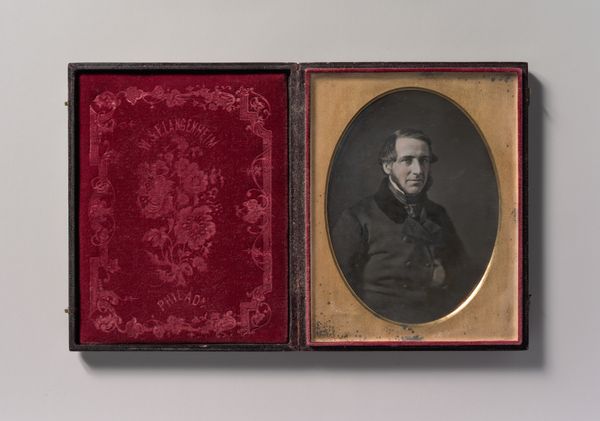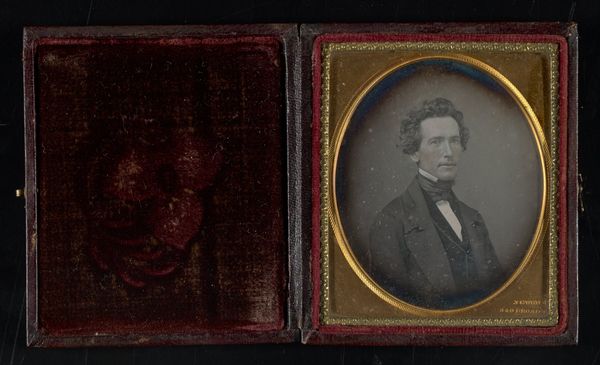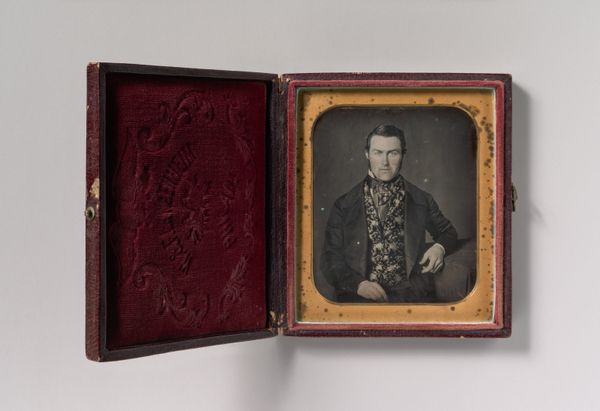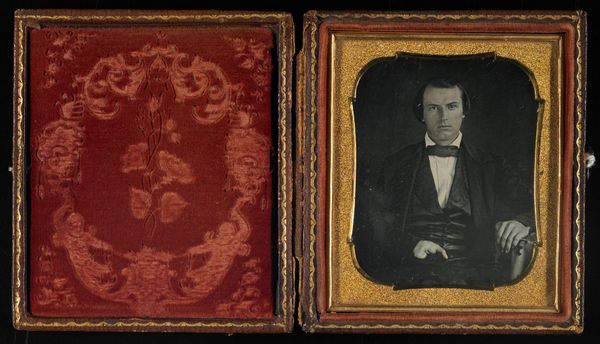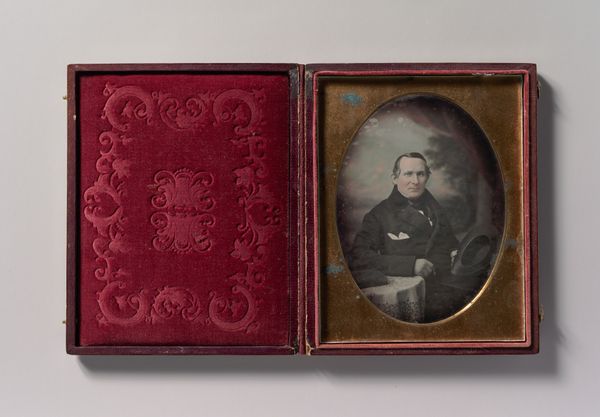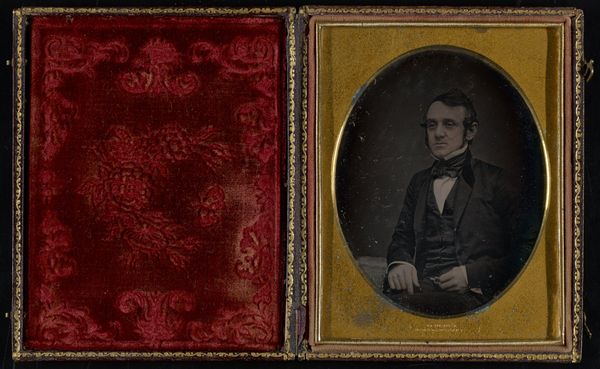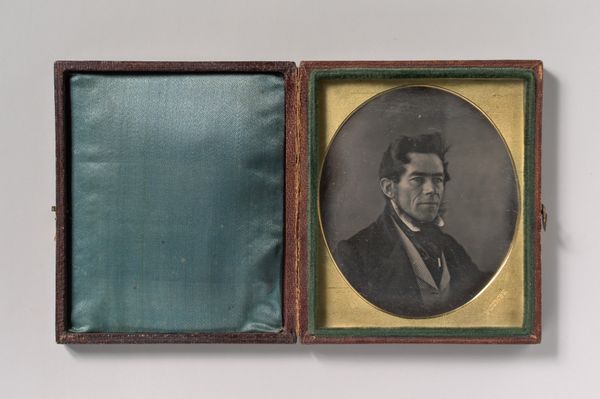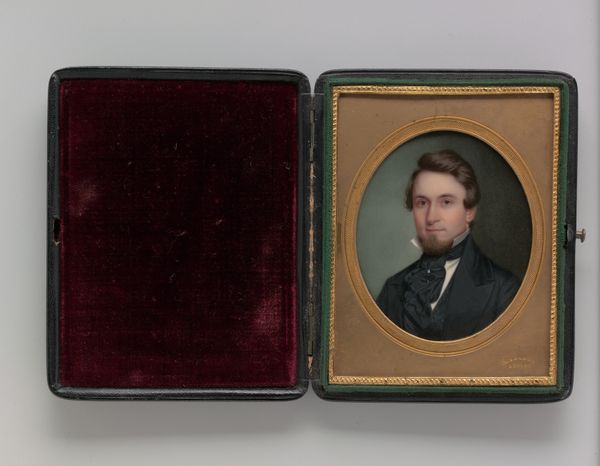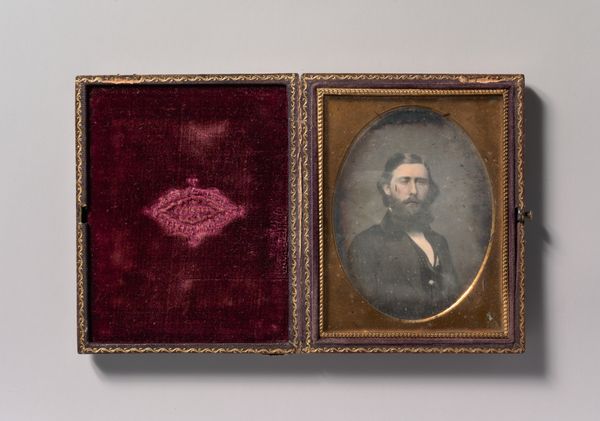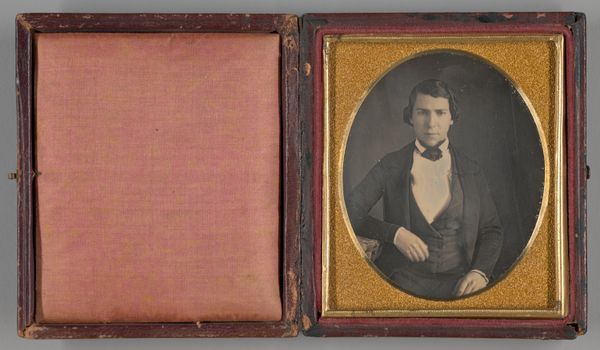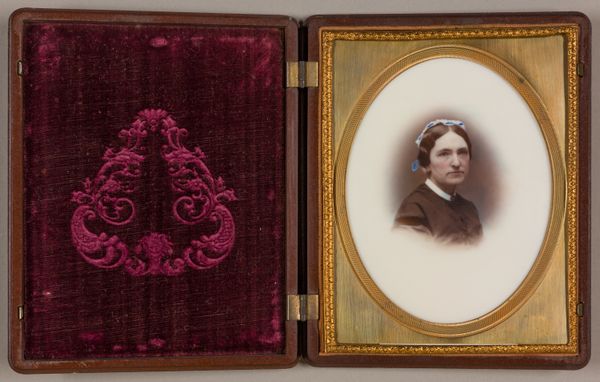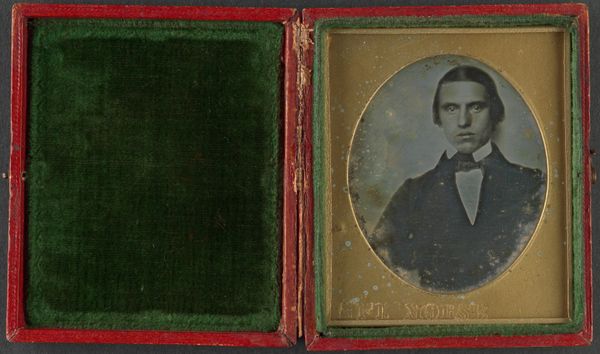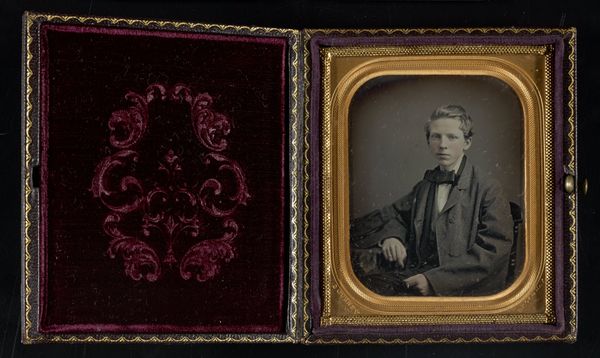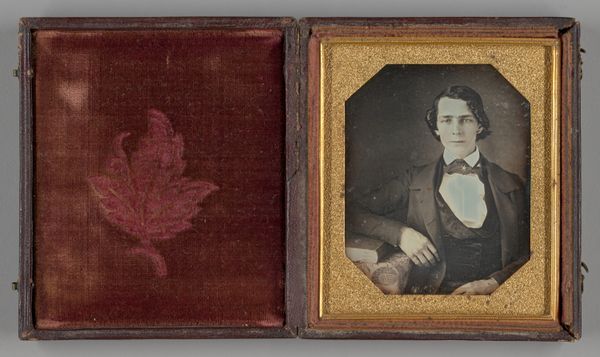![[Young Man] by Knickerbocker Gallery](/_next/image?url=https%3A%2F%2Fd2w8kbdekdi1gv.cloudfront.net%2FeyJidWNrZXQiOiAiYXJ0ZXJhLWltYWdlcy1idWNrZXQiLCAia2V5IjogImFydHdvcmtzL2E2ZjNmMGM4LTRjZjctNDA1ZS04MGY1LTU0MGFhOWVjMGZiNi9hNmYzZjBjOC00Y2Y3LTQwNWUtODBmNS01NDBhYTllYzBmYjZfZnVsbC5qcGciLCAiZWRpdHMiOiB7InJlc2l6ZSI6IHsid2lkdGgiOiAxOTIwLCAiaGVpZ2h0IjogMTkyMCwgImZpdCI6ICJpbnNpZGUifX19&w=3840&q=75)
Dimensions: Image: 7 x 5.7 cm (2 3/4 x 2 1/4 in.) Plate: 8.3 x 7 cm (3 1/4 x 2 3/4 in.) Case: 1.6 x 9.2 x 7.9 cm (5/8 x 3 5/8 x 3 1/8 in.)
Copyright: Public Domain
This portrait of a young man was made by the Knickerbocker Gallery sometime between 1841 and 1859, using a process called daguerreotypy. It's a direct positive image, meaning it's created without a negative, on a silver-plated copper sheet. The reflective surface gives the image a mirror-like quality. Look closely, and you can see how the material influences the appearance, creating a unique depth and luminosity. The plate would have been polished to a mirror finish, sensitized with iodine fumes, exposed in a camera, then developed over heated mercury. The mercury vapors bind to the exposed silver halide crystals, forming the visible image. The whole process speaks to the rise of both photographic technologies and studio practices in the mid-19th century. Encased in a gilded frame and velvet-lined case, this portrait embodies the democratization of image-making and its accessibility to the middle classes. This work reminds us that photography, like any other form of material culture, is deeply interwoven with the social and economic conditions of its time.
Comments
No comments
Be the first to comment and join the conversation on the ultimate creative platform.
